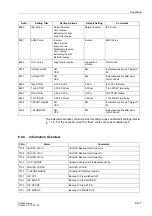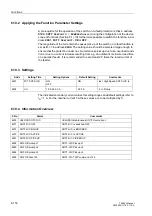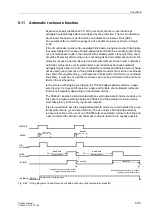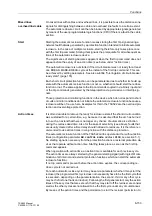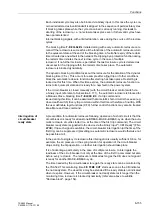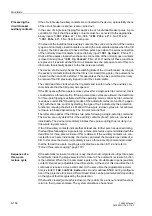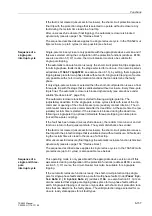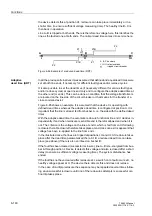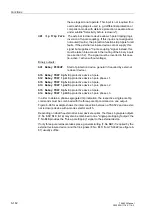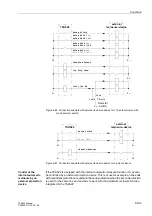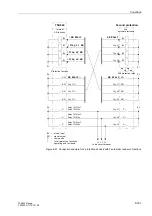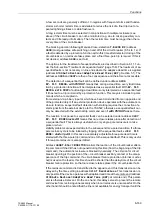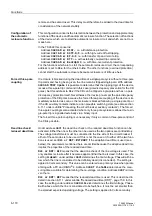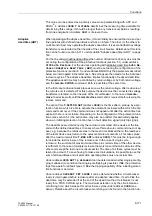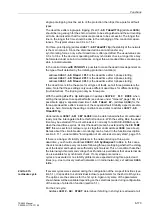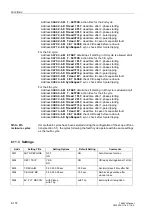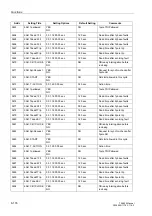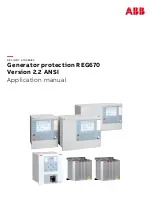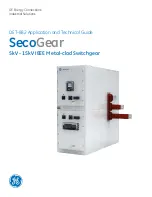
Functions
6-161
7SA522 Manual
C53000-G1176-C119-2
Figure 6-85 Example of adaptive dead time (ADT)
As is shown by the example, the adaptive dead time has the following advantages:
•
The circuit-breaker at position
II
is not reclosed at all if the fault persists and is there-
for not unnecessarily stressed.
•
With non-selective tripping by overreach at position
III
no further trip and reclose
cycles occur here because the short-circuit path via busbar B and position
II
re-
mains interrupted even in the event of several reclosure attempts.
•
At position
I
overreach is allowed in the case of multiple reclosures and even in the
event of final tripping because the line remains open at position
II
and therefor no
actual overreach can occur at
I
.
The adaptive dead time also includes the reduced dead time because the criteria are
the same. There is no need to set the reduced dead time as well.
Close command–
transfer
(Remote–CLOSE)
With close command transmission the dead times are only set at one line end. The
other (or the others in case of lines with more than two end(s) is (are) set to "adaptive
dead time". These ends respond to the received close command from the transmitting
end.
The transmission of the close command by the transmitting line end is delayed until it
is sure that the local reclosure was successful. This means that following reclosure
one further possible local fault detection is waited for. This delay prevents unneces-
sary closing at the remote end on the one hand but also increases the time until reclo-
sure takes place there. This is not critical for a single-pole interruption or in radial or
meshed networks because no stability problems are expected under these conditions.
The close command may be transfered by means of any signal transmission method.
Connecting an
external reclosure
device
If the 7SA522 has to work with an external reclosure device, the binary inputs and out-
puts provided for this purpose must be taken into consideration. The following inputs
and outputs are recommended:
Binary inputs:
With this binary input the external reclosure device
controls stages of the individual short-circuit protection
functions which are active before reclosure (e.g. overreach-
ing zone in the distance protection). The input can be omit-
ted if no overreaching stage is required (e.g. distance pro-
tection with comparison mode, see also above under subti-
tle "Selectivity before reclosure").
The external reclosure device is only programmed for 1 pole;
the stages of the individual protection functions that are ac-
tivated before reclosure via F.No.
only do so in the case
of single-phase faults; in the event of multiple phase faults
Z1B
Z2
A, B, C busbars
I
,
II
,
III
relay locations
tripped circuit-breaker
Z1
Z1B
Z2
Z1
A
B
C
I
(defined pauses)
II
(ADT)
III
Summary of Contents for siprotec 7SA522
Page 20: ...7SA522 Manual C53000 G1176 C119 2 ...
Page 64: ...7SA522 Manual C53000 G1176 C119 2 ...
Page 89: ...SIPROTEC 4 Devices 4 25 7SA522 Manual C53000 G1176 C119 2 Figure 4 20 CFC Logic example ...
Page 408: ...7SA522 Manual C53000 G1176 C119 2 ...
Page 456: ...7SA522 Manual C53000 G1176 C119 2 ...
Page 516: ...7SA522 Manual C53000 G1176 C119 2 ...
Page 620: ...Appendix B 48 ...

